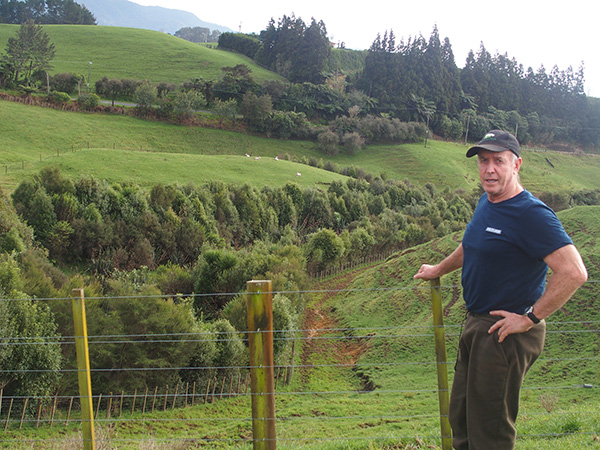Rick Burke says He Waka Eke Noa pricing options need to understand that extensive and intensive farming operations do not operate in the same way.
The group of sheep and beef farmers who recently challenged the two emissions pricing options being put forward by He Waka Eke Noa (HWEN), saying they created an unfair imbalance between extensive and intensive farming systems (Farmers Weekly, March 14), have put forward an alternative approach they say recognises cross-sector differences.
In a letter to HWEN programme director Kelly Forster, Bay of Plenty farmer Rick Burke, one of the farmers involved, said HWEN is trying to deliver a single pricing framework across the spectrum from the most extensive to the most intensive farm systems, from the most complex to the simplest of farm systems.
“This is like trying to fit a round peg into a square hole and will only create winners and losers, which is not fair or equitable,” Burke said in the letter.
He said the differences between livestock industries are starkly reflected in their metrics of success; dairy farms monitor it through measures of production (per kilograms of milk solids), while drystock farms focus on measures of intensity (per hectare).
“It is of no surprise then that the key drivers and principles (between extensive and intensive farming) on how we manage our landscapes/natural capital and use of nitrogen and imported feed and what success looks like, are also distinctly different,” he said.
“Recognising these differing approaches and mindsets could perhaps provide an alternative approach (to emissions pricing), whereby the extensive and intensive farming systems adopt the pricing system that best allows them to determine how they will independently achieve behaviour change to attain required target reductions.
“This would remove any suggestion of one industry subsidising another.”
In the letter, Burke suggests that the different industries should instead follow pricing approaches that suit their emissions profile, based on their level of intensity.
That would mean most sheep, beef, deer and organic/System 1 dairy farms would be priced on emissions per hectare, with increased pricing for farmers with higher emissions, while some finishing farms, feedlots and most dairy farms would be priced on emissions per kg of product.
“We consider that this dual approach is equitable and reflects the different drivers and levers of the different production systems,” he said.
Burke said the dual approach would enable each industry to meet emission targets in its own way and remove the disparity of emissions pricing between extensive and intensive farms.
Another member of the group, Rangitīkei farmer and NZ Deer Farmers Association executive committee member Mark McCoard, said they have been heartened by the response from Beef + Lamb NZ.
“They’ve been actively working with us to achieve a result for sheep and beef farmers and the communities that we live in,” McCoard said.
McCoard acknowledges that a lot of work will need to be done between sectors to get the group’s ideas across the line.
“There is a crossover between the intensive end of the sheep, beef and deer industry, and the lighter end of the dairy industry.
“Our point is that it highlights the difference between extensive and intensive, but the other is (that) dairy (focuses on) kilograms of product,” he said.
“That’s not how the sheep, beef and deer sector operates. They’re per hectare, so the metrics that each industry uses is fundamentally different.
“It’s not how they measure success.”
He said it makes more sense to implement a system where each sector works with what it understands best and can achieve agreed goals in their own way.
“Everyone will still equally contribute, relative to our contribution to (global) warming,” he said.
“The last thing we need is one fighting with the other. We’re just trying to highlight that there are clear differences.
“There’s some clear disparities that need addressing.”
Feedback on the HWEN options can be sent to yourfeedback@hewakaekenoa.nz by March 27.
The HWEN partnership then has until May 31 to report its recommendations to Government Ministers.










